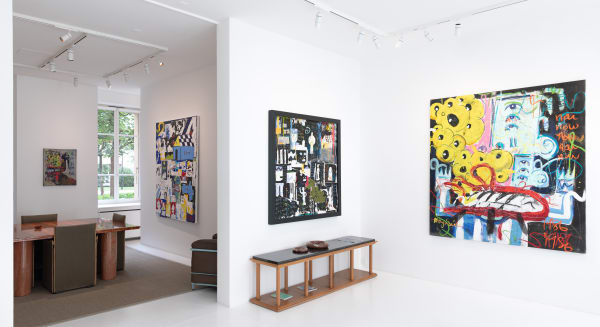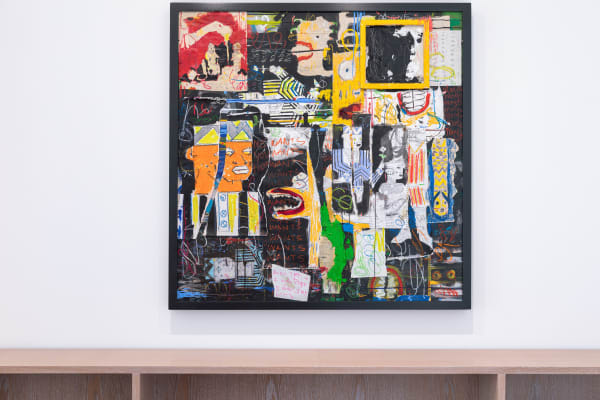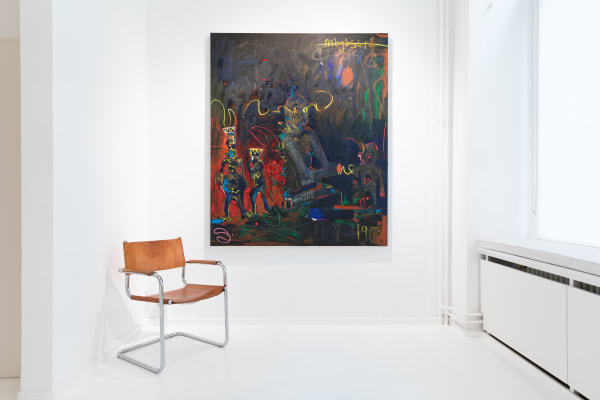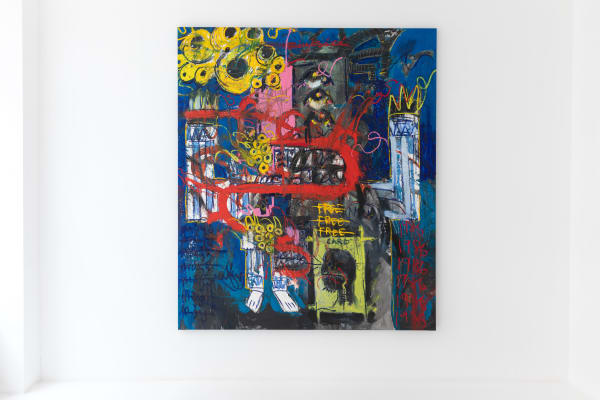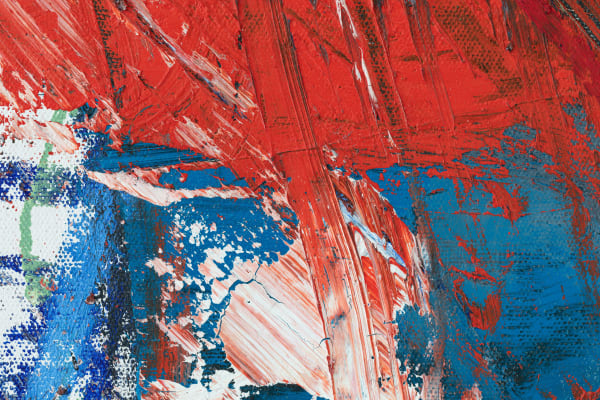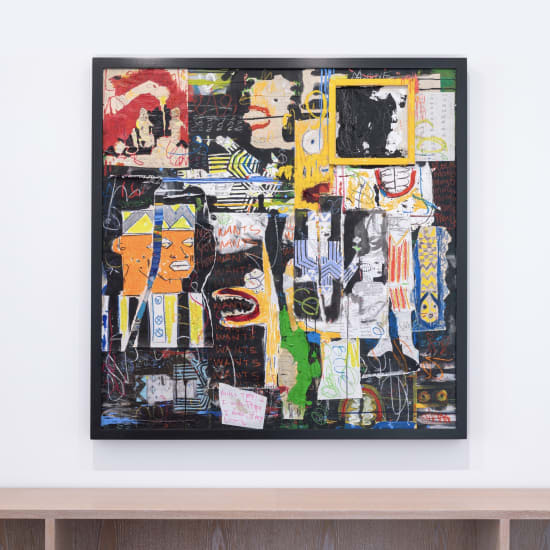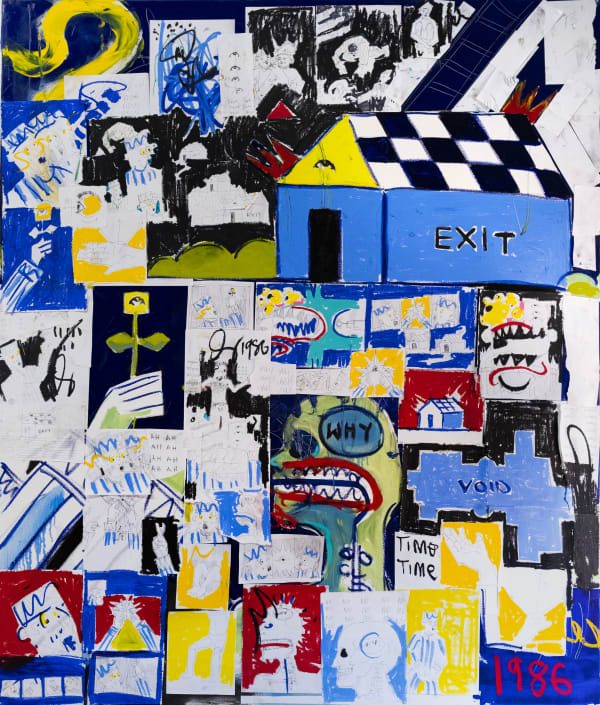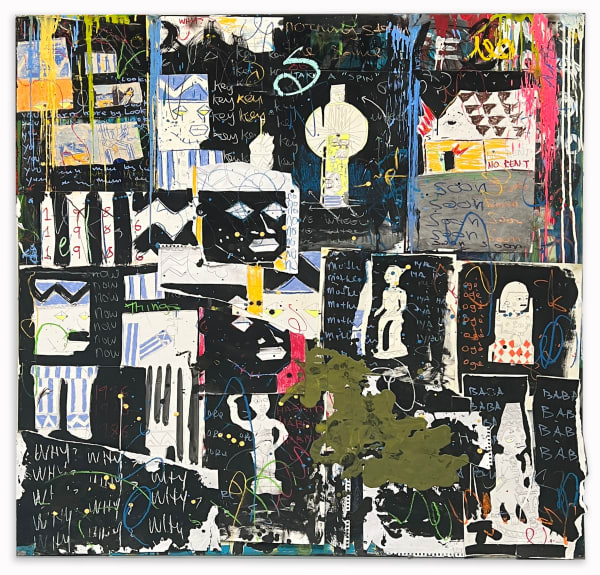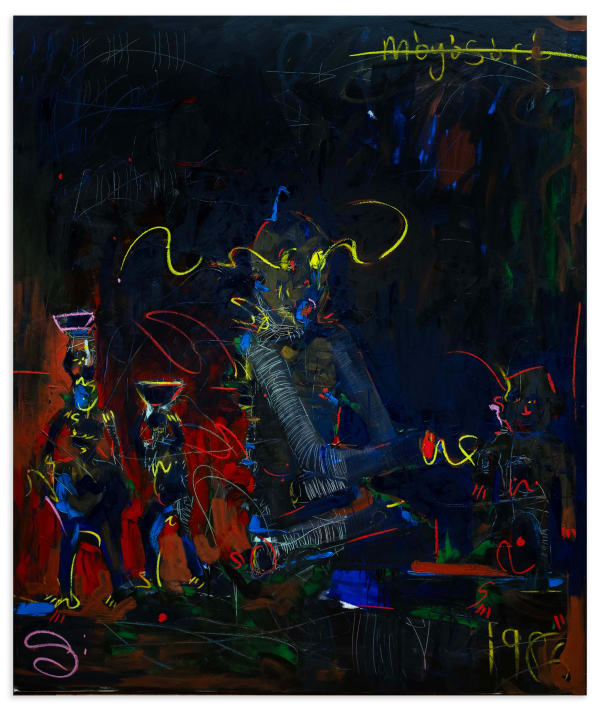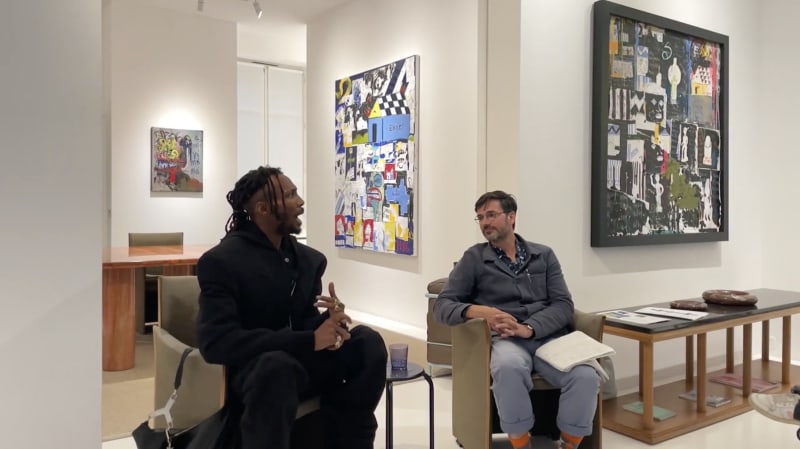Móyòsóré Martins: Through the Light: Geneva
OLIVIER VARENNE presents the first European show of paintings by Lagos-born, New York-based, Móyòsóré Martins, in the presence of the artist.
“My artwork is intentionally raw... I layer the background and then deconstruct it, which gives the feeling of wear and tear on the canvas. No painting is alike as each has symbolic patterns and encrypted messages hidden within it. I want to merge the vision with the given and the new world that I live in now. The word “Why?” is seen in a lot of the work because it leaves you asking the same question.”
Móyòsóré Martins’ vibrant paintings are a dynamic fusion of his African and Brazilian heritage, Yoruba traditions and the lively influences of New York pop culture.
Often working at night, to a jazz soundtrack, Martins (b. 1986) combines references to the complexities of adult life with a free-thinking, child-like approach. Throughout the paintings are animated by his very personal symbolism (see Lexicon below).
His works feature enigmatic figures and abstract forms that capture a raw essence, acknowledge the passage of time and reveal his instinctive and animated inner world.
BIOGRAPHY
Móyòsóré Martins is a self-taught mixed-media artist. Raised in Lagos, Nigeria by a Brazilian father and a Nigerian mother from Ekiti state, Martins adopted a paintbrush and pencil at a young age as instruments to express his innately curious and spiritual nature. Through his work, Martins blends his traditional Yoruba cultural roots with his contemporary vision of art.
Martins’s artwork combines figurative, abstract, and narrative elements drawn from his unique life experience and journey from Nigeria to his large Bronx studio. His work is deeply symbolic and frequently features cultural and personal iconography. Martins’s richly textured paintings feature bold brushstrokes, thick oil paint, drawings, scribbles, collaged materials, and text. The vibrant, heavily layered canvases are interspersed with spiritual elements and wishes manifested and fulfilled. Martins also works in three-dimensional form with clay sculpture.
Forbidden by his father to create or study art, Martins spent his college years in Ghana and the Ivory Coast studying computer science. He immigrated to New York City in 2015 to further pursue his artistic ambitions. Martins’ artwork has been exhibited at the Nassau County Museum (Roslyn, NY), Path Gallery (Los Angeles, CA), TrafficArts (New York, NY), Dacia Gallery (New York, NY), Heath Gallery (New York, NY), Grady Alexis Gallery (New York, NY) and Long-Sharp Gallery (Indiannapolis, IN).
Moyosore Martins bridges abstract, figurative, and iconographic symbolism. He expresses the beauty in the figure and the depth of its subject; he obsesses with a cartoon-like character that imbues his iconography and that has a deep symbolic meaning. His approach is narrative and realistic in the early works, returning to his childhood memories. The African statue is always present and spiritually meaningful in his work. He is fascinated with contemporary plastic toy statues and collectibles from artists like Kaws, representing everything different in juxtaposition to the traditional Yaruba figures. A seminal work, “Watchman,” resonates; the painting is a study of the Yaruba figure and is interpreted by Martins as the man taking on his destiny, with a nod to his experience while employed as a night watchman in the Bronx—a lasting impression.
Martins expresses the emotion of the characters he deftly paints, the backgrounds layered, manipulated, scratched, and then infused with text. He places himself in the canvas, in the artwork, in spirit and name, even his birthdate. He scribbles words, mathematical formulas, mantras, and prayers. He visually expresses his internal conversation, which shifts as his world does—as a visual biography. He resists being put in a box. His unique use of materials and story is the cord that ties his work together.
Martins' paintings express an internal conversation and what he is experiencing at a given moment. His artwork and craft grow as his career expands, and he receives increasing attention for his work. He looks back, reflecting on his path and where he has come from, both as a person and artistically. Entrenched with personal symbolism, every element of a painting has a purpose and a specific meaning to him, much like a morse code. The multiple eyes symbolize his own spiritual “all-seeing”; the clusters of floating eyeballs represent a feeling that all eyes are on him, being “seen,” his work being seen. The mouth, large and slightly aggressive, describes the intensity of the experience of people talking about him. The etched words are like a mantra to manifest his vision.
LEXICON
Eyes - clusters of floating eyeballs represent a feeling that all eyes are on him - his work is being seen.
Mouth - large and slightly aggressive, the mouth describes the intensity of the experience of people talking about him. Words – script, mathematical formulas and prayers are a form of mantra to manifest his vision.
The ‘Watchman’ – a Yaruba figure, a man taking on his destiny, a reminder of working as a night watchman in the Bronx.
African statues – a spiritual symbol and contrasted to plastic toys, and collectibles by contemporary artists.
Blue and white striped clothing – worn by a spiritual higher caste in the Yoruba culture, to which Martins is connected through his grandfather who was a chief.

